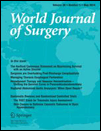Significance of Preoperative Evaluation of the Right Gastroepiploic Artery Graft to the Coronary Artery in Patients Undergoing Abdominal Surgery
Abstract
Background
A major concern with the use of the right gastroepiploic artery (RGEA) as the graft for coronary artery bypass grafting (CABG) is the potential for injury, which can result in critical myocardial ischemia during future abdominal surgery.
Methods
We examined the availability of preoperative image evaluation, preoperative recognition of the RGEA graft, and operative findings such as graft identification, graft injury, and cardiac events in 11 patients who underwent abdominal surgery after CABG using the RGEA as the graft.
Results
Prior to the abdominal surgery, contrast-enhanced computed tomography (CT) was performed in all 11 patients, while coronary angiography or three-dimensional CT angiography was performed in five patients. We detected the RGEA graft retrospectively in nine of ten patients in whom the images from contrast-enhanced CT were still available. Among the seven patients whose RGEA grafts were in the operative field, the RGEA graft was identified in five patients, while the RGEA graft was not identified in the remaining two patients because of adhesions. There were no intraoperative cardiac events in any of the 11 patients.
Conclusions
It is important to determine whether an RGEA graft is present when repeat laparotomy is required after CABG. In cases where an RGEA graft is present, it is essential to evaluate the patency and location of the graft since this will be crucial for planning the reoperation strategy. Preoperative recognition and evaluation of the RGEA graft can help avoid graft injury, even if the graft cannot be detected intraoperatively.




